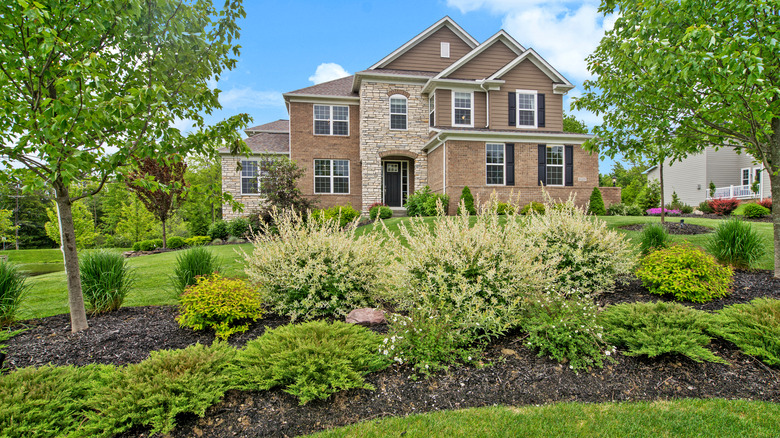The Shade-Loving Ground Cover That Guards Sloped Yards From Soil Erosion
Whether caused by weather conditions or human activity, soil erosion can affect the fertile topsoil in your yard and damage the ecosystem, causing big issues for your garden and the surrounding area. As sloped landscaping can be a cause of soil erosion due to the speed of water runoff, it is important to do what you can to stabilize your slopes. One environmentally friendly option is to plant native ground covers. If your sloped garden is in a shady spot, a great choice for a ground cover that prevents soil erosion is American wintergreen (Gaultheria procumbens). This creeping perennial is spreading and low-growing, which creates a dense cover. This will catch rain before it gets to the soil, protecting it against runoff and erosion. American wintergreen does well in shady areas and can even thrive in heavy shade, making it perfect for sloped areas where sun-loving species wouldn't survive.
As a native plant, American wintergreen is suited well to local conditions and therefore can spread its rhizomes effectively. This will hold the soil together and further lower the risk of erosion. Furthermore, it's a low-maintenance shrub, so you don't have to walk up and down a steep incline to deadhead and prune. Hardy to USDA Hardiness Zones 3 to 8, it has small, dark green evergreen leaves that turn various shades of purple in fall. It flowers in June and July, producing small, bell-shaped blooms that soon turn into berries. These stay on the plant throughout winter, providing your garden with bursts of festive color. They are also a food source for small animals, so you will bring biodiversity into your garden while protecting the soil.
How to plant American wintergreen on slopes
Before planting American wintergreen on your slope, you should first evaluate the area to ensure it has the best conditions for the plant beyond just shade. American wintergreen does well in well-drained, fertile soil. You may also wish to consider incorporating other plants with different sizes and growth habits onto the slope, as the variety of root systems can help keep the soil in place. If you do so, select plants that have a similar growth rate to American wintergreen to avoid them outcompeting it.
When you are ready to plant, prepare the soil by removing any weeds and adding organic matter. Then, place the shrubs 10 to 14 inches apart from each other. Placing them in a staggered pattern will help speed up coverage. If your slope has a moderate incline, you can plant the American wintergreen on an angle so that the roots are covered. They will usually straighten themselves out after a while. Once you have planted the shrubs, surround them with a thick layer of coarse, natural mulch, such as shredded bark or leaf mold. American wintergreen will need water at first to help it establish itself, but this can be a challenge on a slope. If the water runs quickly downhill before soaking in, you may wish to consider drip irrigation systems to help the plants receive a constant flow of water. Keep on top of weeds as the shrubs settle in and monitor water flow on the slope. If gullies or runnels appear, take action straight away to protect your soil and plants.

